UNESCO sites in Iran
There're 19 world heritage sites in Iran, that is 1,6% of all the world heritage sites. There're 51 sites submitted on the tentative list.
Armenian Monastic Ensembles of Iran
The Armenian Monastic Ensembles of Iran, in the north-west of the country, consists of three monastic ensembles of the Armenian Christian faith: St Thaddeus and St Stepanos and the Chapel of Dzordzor. These edifices - the oldest of which, St Thaddeus, dates back to the 7th century – are examples of outstanding universal value of the Armenian architectural and decorative traditions. They bear testimony to very important interchanges with the other regional cultures, in particular the Byzantine, Orthodox and Persian. They originate from between the 7th and 14th centuries, but have been rebuilt many times due to nature and human inflicted disasters.
The monastery of St. Thaddeus is the second religious centre for the Armenian church, after the cathedral of Echmiatsin. It is the supposed place of the tomb of St. Thaddeus, one of the twelve Apostles. This makes it into an important place of pilgrimage (in June).

Bam and its Cultural Landscape
Bam and its Cultural Landscape is an outstanding example of a Central Asian trading settlement. The town had its heyday from the 7th to 11th centuries.
The ancient citadel of Arg-é Bam probably has a history dating back around 2000 years ago, to the Parthian dynasty (248 BC-224 AD), but most buildings were built during the Safavid dynasty (1501/1502 to 1722). Its heyday was from the 7th to 11th centuries, being at the crossroads of important trade routes and known for the production of silk and cotton garments. The existence of life in the oasis was based on the underground irrigation canals, the qanāts, of which Bam has preserved some of the earliest evidence in Iran. Arg-e Bam is the most representative example of a fortified medieval town built in vernacular technique using mud layers.
Bam was almost completely destroyed in an earthquake on December 26, 2003 that had a magnitude of 6.6 on the Richter scale. Bam is situated in a desert environment on the southern edge of the Iranian high plateau.
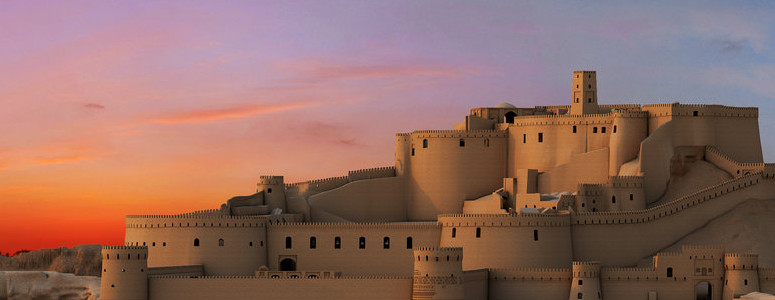
Bisotun
Bisotun is an archaeological site located along a historical trade route in the Kermanshah Province of Iran, along the ancient trade route linking the Iranian high plateau with Mesopotamia and features remains from the prehistoric times to the Median, Achaemenid, Sassanian, and Ilkhanid periods. The principal monument of this archaeological site is the bas-relief and cuneiform inscription ordered by Darius I, The Great, when he rose to the throne of the Persian Empire, 521 BC. The bas-relief portrays Darius holding a bow, as a sign of sovereignty, and treading on the chest of a figure who lies on his back before him. According to legend, the figure represents Gaumata, the Median Magus and pretender to the throne whose assassination led to Darius’s rise to power. Below and around the bas-reliefs, there are ca. 1,200 lines of inscriptions telling the story of the battles Darius waged in 521-520 BC against the governors who attempted to take apart the Empire founded by Cyrus. The inscription is written in three languages. The oldest is an Elamite text referring to legends describing the king and the rebellions. This is followed by a Babylonian version of similar legends. The last phase of the inscription is particularly important, as it is here that Darius introduced for the first time the Old Persian version of his “res gestae” (things done). It is to cuneiform script what the Rosetta Stone is to Egyptian hieroglyphs: the document most crucial in the decipherment of a previously lost script.
This is the only known monumental text of the Achaemenids to document the re-establishment of the Empire by Darius I. It also bears witness to the interchange of influences in the development of monumental art and writing in the region of the Persian Empire. There are also remains from the Median period (8th to 7th centuries B.C.) as well as from the Achaemenid (6th to 4th centuries B.C.) and post-Achaemenid periods.
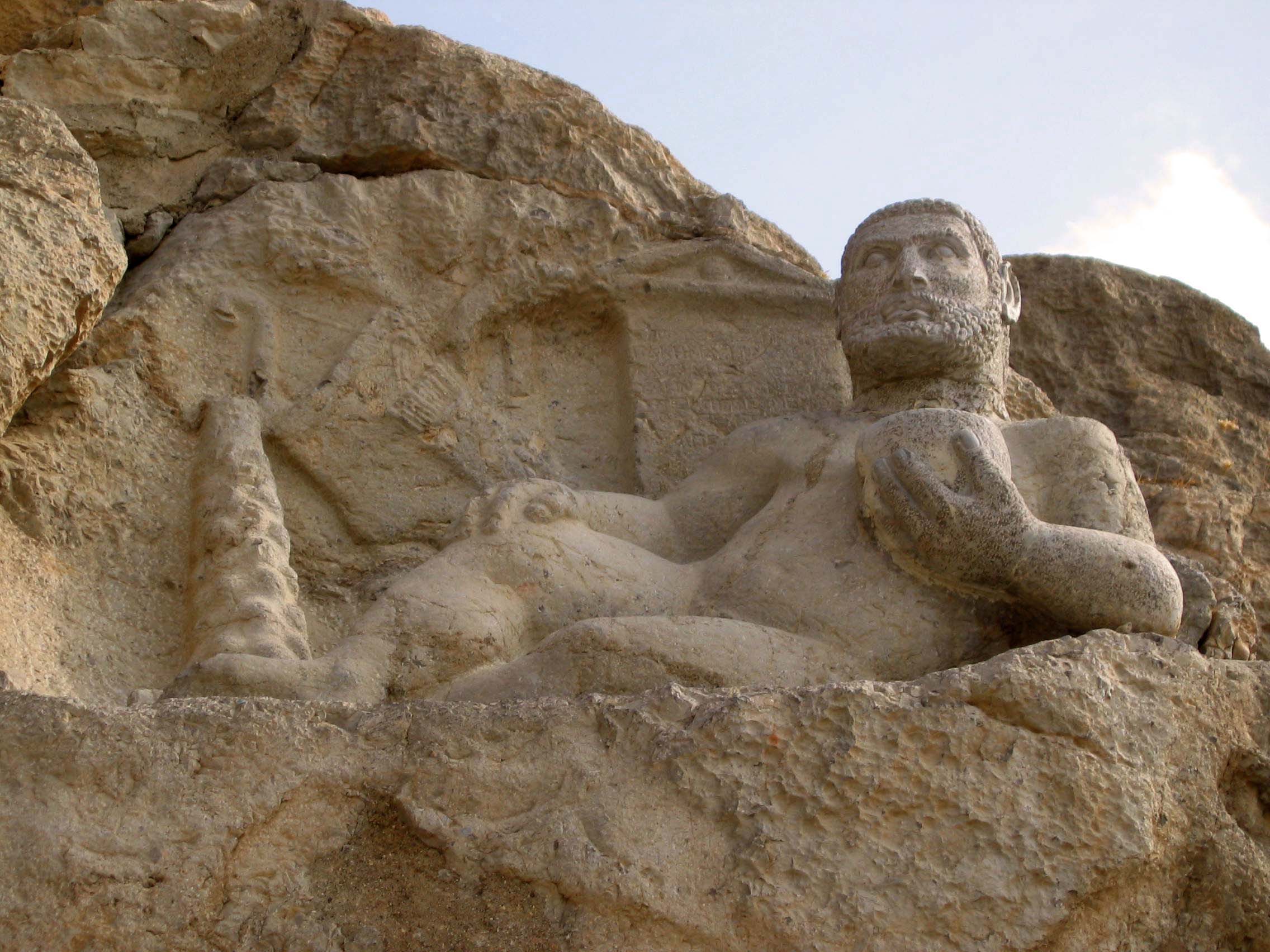
Golestan Palace
The Golestan Palace is a 19th century royal residence in Teheran, built by the Qajar dynasty. It embodies the successful integration of earlier Persian crafts and architecture with Western influences. The walled Palace, one of the oldest groups of buildings in Teheran, became the seat of government of the Qajar family, which came into power in 1779 and made Teheran the capital of the country. Built around a garden featuring pools as well as planted areas, the Palace’s most characteristic features and rich ornaments date from the 19th century. It became a centre of Qajari arts and architecture of which it is an outstanding example and has remained a source of inspiration for Iranian artists and architects to this day. Some of the notable features include The Marble Throne, The Hall of Mirrors, Hoze Khaneh (a summer chamber with cooling system).
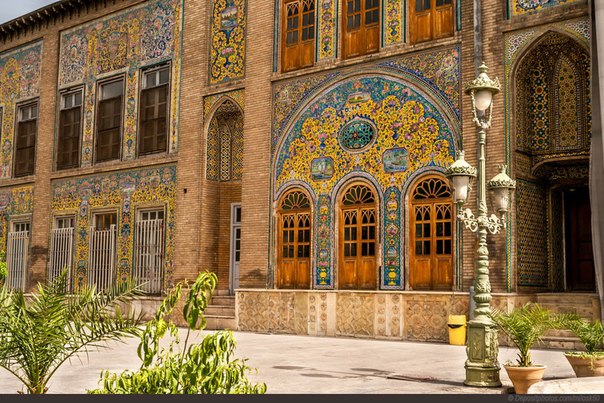
Gonbad-e Qabus
Gonbad-e Qabus is a monumental tomb tower, the earliest and tallest in this part of Asia. It was built in 1006 as a tomb for emir Qabus-ibn-Voshmgir. The 53 metres high tower was constructed using unglazed fired bricks. It is an outstanding and technologically innovative example of Islamic architecture that influenced sacral building in Iran, Anatolia and Central Asia. Later it became the prototype for the construction of tomb towers in the history of Islamic Architecture. The tower is the only part that remains of the historic town of Jorjan. It stands on a domed hill in a park in the center of the current city Gonbad-e Qâbus. Built of unglazed fired bricks, the monument’s intricate geometric forms constitute a tapering cylinder with a diameter of 17–15.5 m, topped by a conical brick roof. It illustrates the development of mathematics and science in the Muslim world at the turn of the first millennium AD.
Masjed-e Jame of Isfahan
Located in the historic center of Isfahan, the Masjed-e Jāmé (‘Friday mosque’) can be seen as a stunning illustration of the evolution of mosque architecture over twelve centuries, starting in ad 841. It is the oldest preserved edifice of its type in Iran and a prototype for later mosque designs throughout Central Asia. The complex, covering more than 20,000 sq.m., is also the first Islamic building that adapted the four-courtyard layout of Sassanid palaces to Islamic religious architecture. Its double-shelled ribbed domes represent an architectural innovation that inspired builders throughout the region. The site also features remarkable decorative details representative of stylistic developments over more than a thousand years of Islamic art.

Meidan Emam, Esfahan
Meidan Emam or Emam Square (also known as Naghsh-e Jahan) is one of the largest city squares in the world. Built by Shah Abbas I the Great at the beginning of the 17th century, and bordered on all sides by monumental buildings linked by a series of two-storeyed arcades, the site is known for the Royal Mosque, the Mosque of Sheykh Lotfollah, the magnificent Portico of Qaysariyyeh and the 15th-century Timurid palace. They are an impressive testimony to the level of social and cultural life in Persia during the Safavid era.
Pasargadae
Pasargadae was the first dynastic capital of the Achaemenid Empire, founded by Cyrus II the Great, in Pars, homeland of the Persians, in the 6th century BC. Its palaces, gardens and the mausoleum of Cyrus are outstanding examples of the first phase of royal Achaemenid art and architecture and exceptional testimonies of Persian civilization. Particularly noteworthy vestiges in the 160-ha site include: the Mausoleum of Cyrus II; Tall-e Takht, a fortified terrace; and a royal ensemble of gatehouse, audience hall, residential palace and gardens. Pasargadae was the capital of the first great multicultural empire in Western Asia. Spanning the Eastern Mediterranean and Egypt to the Hindus River, it is considered to be the first empire that respected the cultural diversity of its different peoples. This was reflected in Achaemenid architecture, a synthetic representation of different cultures.
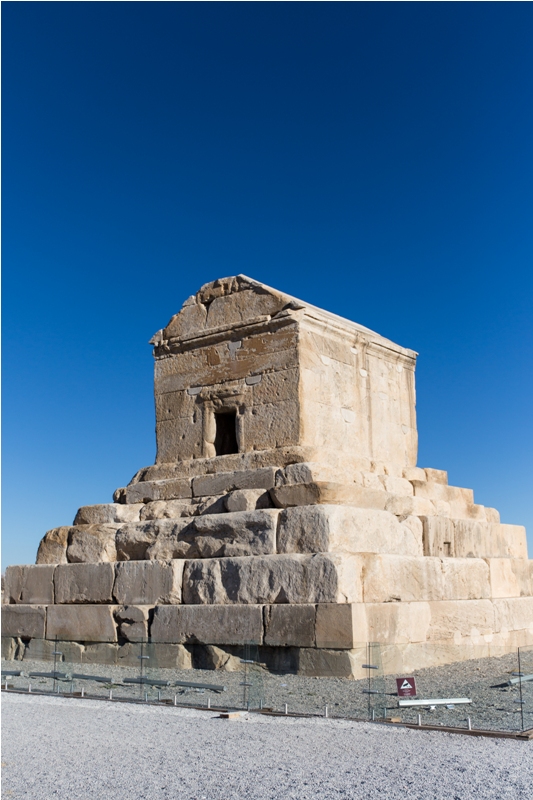
Persepolis
Founded by Darius I in 518 B.C., Persepolis was the capital of the Achaemenid Empire. It was built on an immense half-artificial, half-natural terrace, where the king of kings created an impressive palace complex inspired by Mesopotamian models. The importance and quality of the monumental ruins make it a unique archaeological site.The magnificent ruins of Persepolis lie at the foot of Kuh-i-Rahmat (Mountain of Mercy) in the plain of Marv Dasht about 650 km south of the present capital city of Teheran.Founded by Darius I in 518 BC (although more than a century passed before it was finally completed by Artaxerxes I), Persepolis was the capital of the Achaemenid Empire. An inscription carved on the southern face of the terrace proves that Darius the Great was the founder of Persepolis.

Shahr-i Sokhta
Shahr-i Sokhta, meaning ‘Burnt City’, is located at the junction of Bronze Age trade routes crossing the Iranian plateau. The remains of the mudbrick city represent the emergence of the first complex societies in eastern Iran. Founded around 3200 BC, it was populated up to 1800 BC. It is associated with the Jiroft culture, an "independent Bronze Age civilization with its own architecture and language", intermediate between Elam to the west and the Indus Valley Civilization to the east.
Covering an area of 151 hectares, Shahr-i Sokhta was one of the world’s largest cities at the dawn of the urban era. In the western part of the site is a vast graveyard. It contains between 25,000 to 40,000 ancient graves. Diversions in water courses and climate change led to the eventual abandonment of the city in the early second millennium. The structures, burial grounds and large number of significant artifacts unearthed there, and their well-preserved state due to the dry desert climate, make this site a rich source of information regarding the emergence of complex societies and contacts between them in the third millennium BC.
Sheikh Safi al-din Khanegah and Shrine Ensemble in Ardabil
The Sheikh Safi al-Din Khanegah and Shrine Ensemble in Ardabil is a Sufi spiritual retreat dating from between the early 16th century and late 18th century. It is the burial site of Safi al-Din Ardabili (b. 1252/3), the eponymous founder of the Safawiyya order of Sufism. The complex is a fine example of medieval Iranian architecture. The shrine was an important site of pilgrimage throughout the Safavid period (1501-1722) and underwent numerous improvements and embellishments to become one of the most beautiful of all Safavid monuments. The site includes a library, a mosque, a school, a mausoleum, a cistern, a hospital, kitchens, a bakery and some offices. The floor of the shrine is covered with a reproduction of the most famous carpet in the world – the Ardebil Carpet. It incorporates a route to reach the shrine of the Sheikh divided into seven segments, which mirror the seven stages of Sufi mysticism, separated by eight gates, which represent the eight attitudes of Sufism. The ensemble includes well-preserved and richly ornamented facades and interiors, with a remarkable collection of antique artifacts. It constitutes a rare ensemble of elements of medieval Islamic architecture.
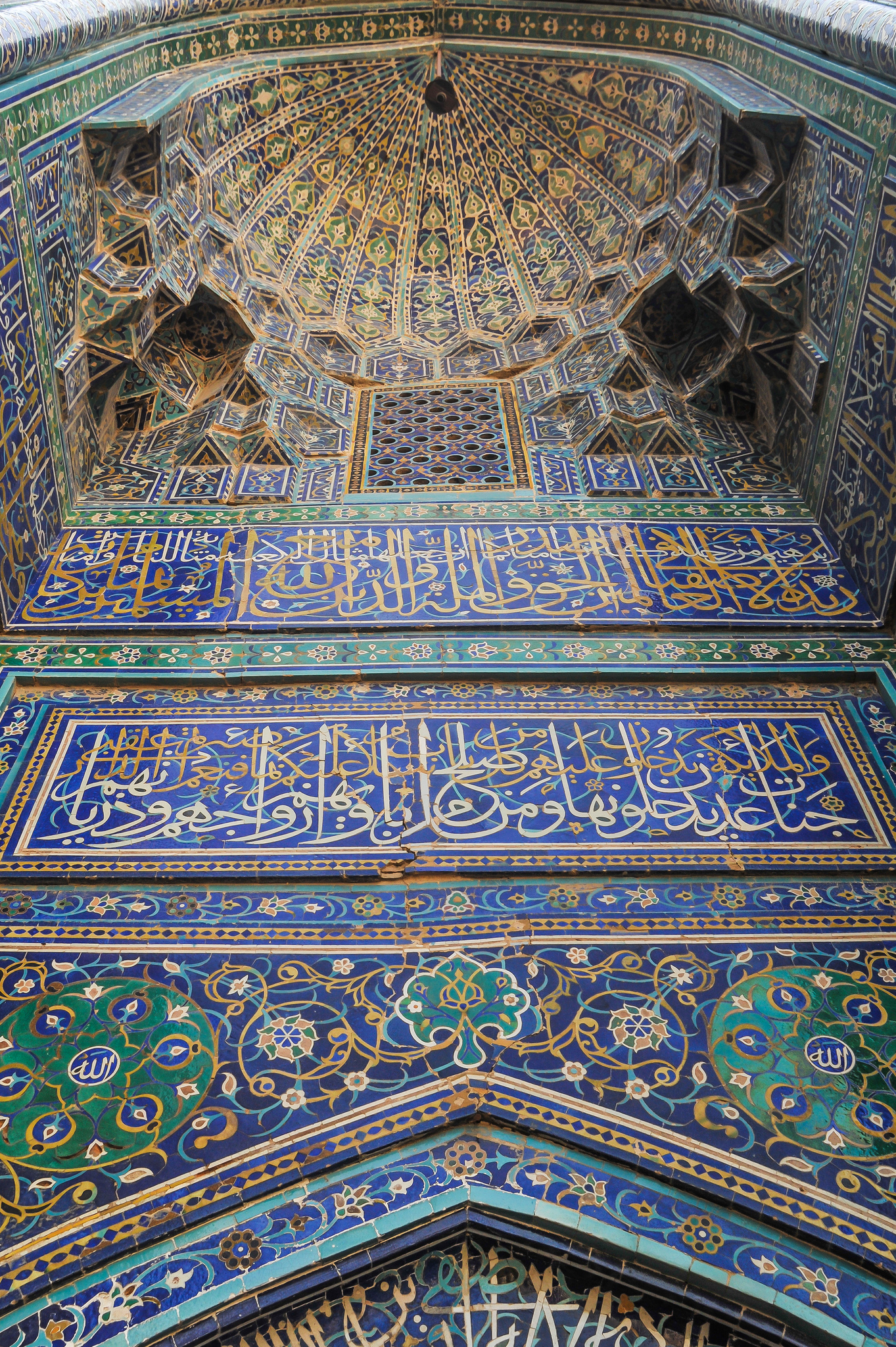
Shushtar Historical Hydraulic System
Shushtar Historical Hydraulic System is an island city from the Sassanian era with a complex irrigation system. It involved the creation of two main diversion canals on the river Kârun one of which, Gargar canal, is still in use providing water to the city of Shushtar via a series of tunnels that supply water to mills. It forms a spectacular cliff from which water cascades into a downstream basin. It then enters the plain situated south of the city where it has enabled the planting of orchards and farming over an area of 40,000 ha. known as Mianâb (Paradise). The property has an ensemble of remarkable sites including the Salâsel Castel, the operation centre of the entire hydraulic system, the tower where the water level is measured, damns, bridges, basins and mills. It bears witness to the know-how of the Elamites and Mesopotamians as well as more recent Nabatean expertise and Roman building influence.
Soltaniyeh
The ancient city of Soltaniyeh was the capital of the Ilkhanid dynasty (13th and 14th centuries), which was founded by the Mongols. The main feature of Soltaniyeh's several ruins is the Mausoleum of Il-khan Oljeitu, traditionally known as the Dome of Soltaniyeh. It is a key monument in the history of Islamic architecture. The structure, erected from 1302 until 1312, boasts the oldest double-shell dome in the world. The octagonal building is crowned with a 50m-tall dome covered in turquoise blue faience and surrounded by eight slender minarets. It is the earliest existing example of the double-shelled dome in Iran.
Its importance in the Muslim world may be compared to that of Brunelleschi's cupola for the Christian architecture. The mausoleum’s decoration is also outstanding and scholars such as A.U. Pope have described the building as ‘anticipating the Taj Mahal’.

Tabriz Historic Bazaar Complex
The Tabriz Historic Bazaar Complex is one of the oldest bazaars of the Middle East and the largest covered bazar in the world. Tabriz has been a place of cultural exchange since antiquity and its historic bazaar complex is one of the most important commercial centres on the Silk Road.
The most prosperous time of Tabriz and its complex Bazaar was in the 13th century when town became the capital city of Safavid kingdom. The city lost its status as capital in the 16th century, but its Bazaar has remained important as a commercial and economic center.
Tabriz Historic Bazaar Complex consists of a series of interconnected, covered, brick structures, buildings, and enclosed spaces for different functions. It is one of the most complete examples of the traditional commercial and cultural system of Iran.
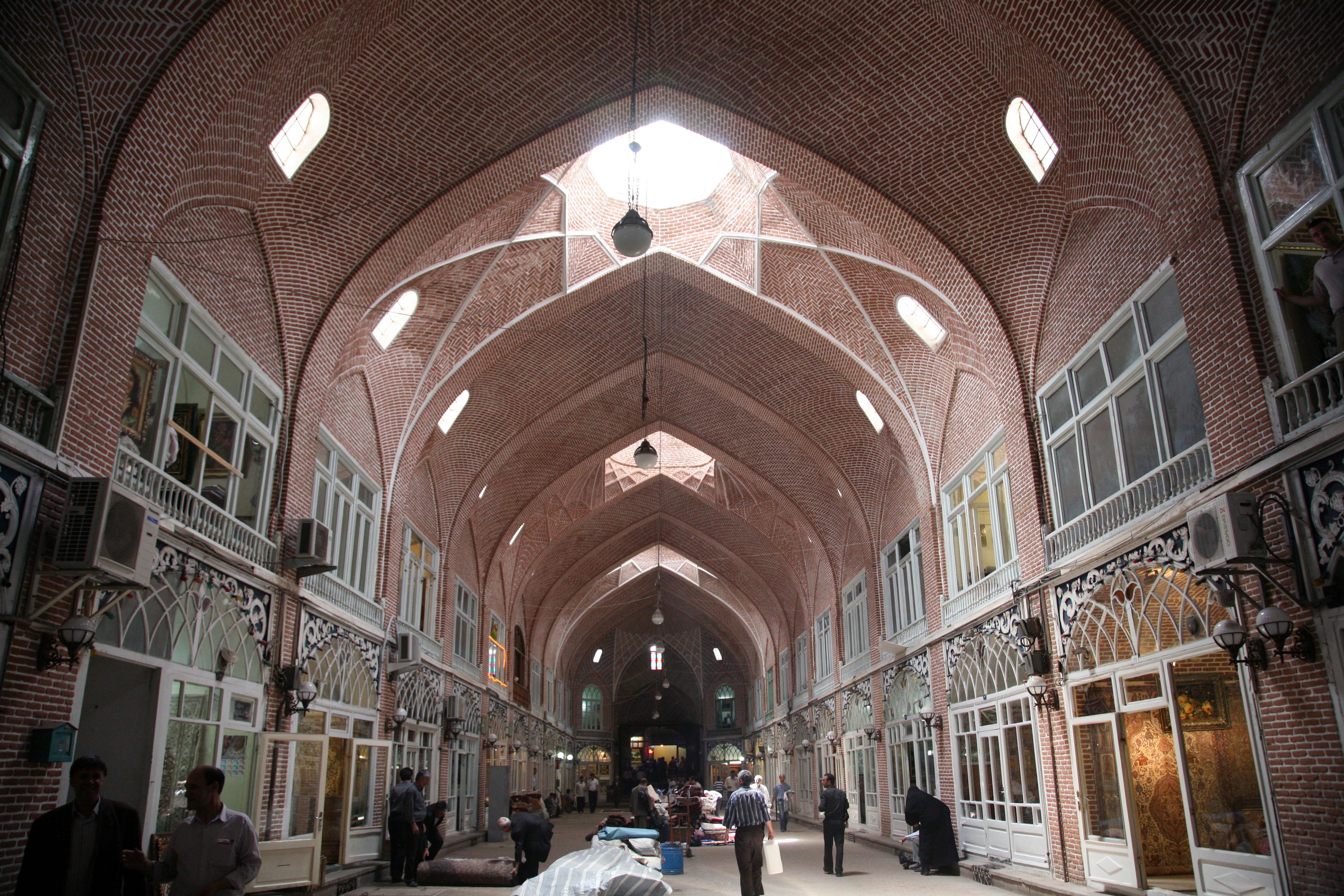
Takht-e Soleyman
The archaeological site of Takht-e Soleyman, in north-western Iran, is situated in a valley set in a volcanic mountain region. The site includes the principal Zoroastrian sanctuary partly rebuilt in the Ilkhanid (Mongol) period (13th century) as well as a temple of the Sasanian period (6th and 7th centuries) dedicated to Anahita. The site has important symbolic significance. The designs of the fire temple, the palace and the general layout have strongly influenced the development of Islamic architecture.
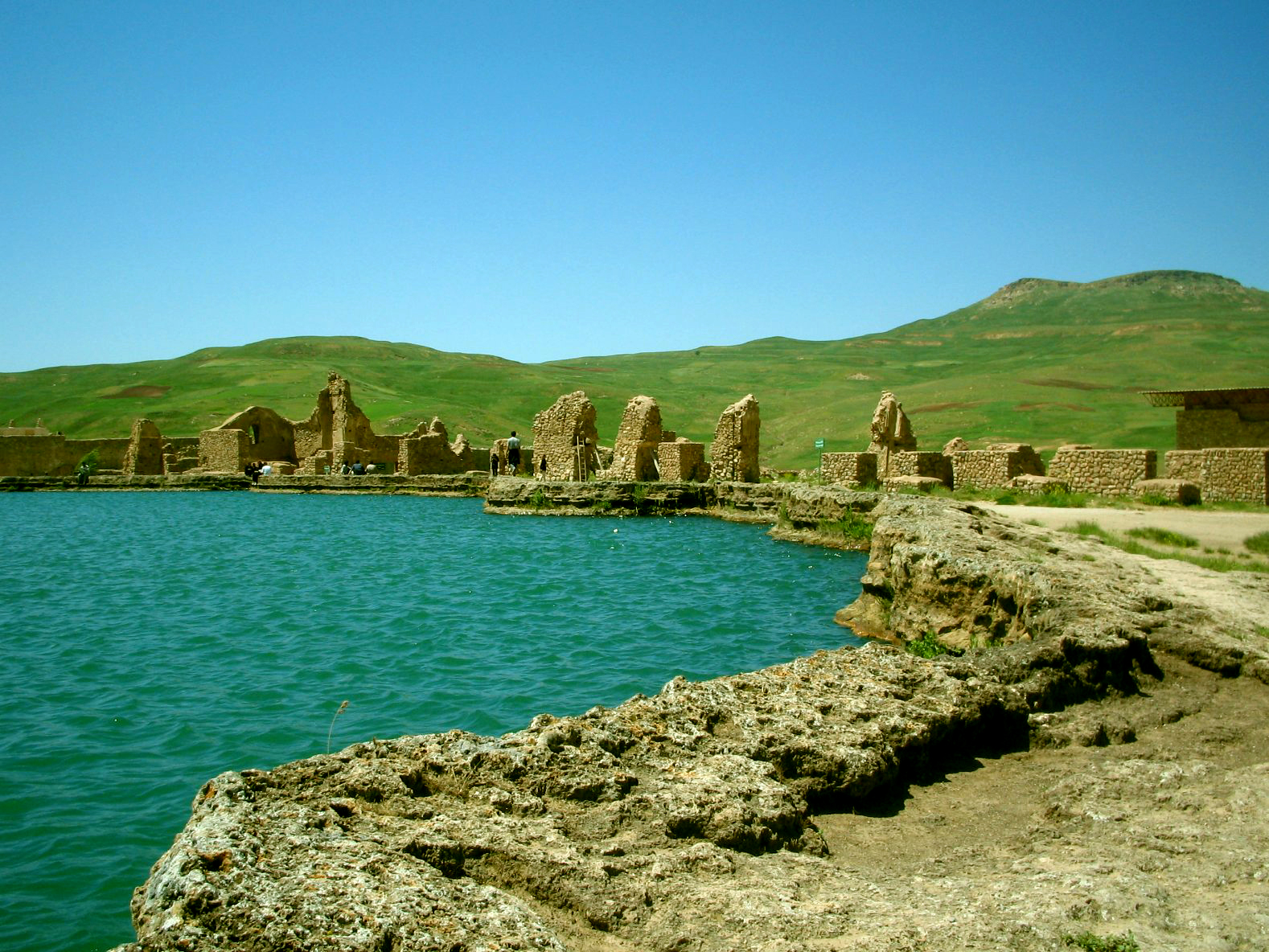
Tchogha Zanbil
The ruins of the holy city of the Kingdom of Elam, surrounded by three huge concentric walls, are found at Tchogha Zanbil. Founded c. 1250 B.C., the city remained unfinished after it was invaded by Ashurbanipal, as shown by the thousands of unused bricks left at the site.
Archaeological excavations between 1951 and 1962 revealed the site again, and the ziggurat is considered to be the best preserved example in the world. It is one of the few extant ziggurats outside of Mesopotamia. It was built about 1250 BCE by the king Untash-Napirisha, mainly to honour the great god Inshushinak.
The complex is protected by three concentric walls, which form three main areas of the "town." The inner area is wholly taken up with a great ziggurat dedicated to the main god, which was built over an earlier square temple with storage rooms also built by Untash-Napirisha.
The middle area holds eleven temples for lesser gods. It is believed that twenty-two temples were originally planned, but the king died before they could be finished, and his successors discontinued the building work. In the outer area are royal palaces, a funerary palace containing five subterranean royal tombs, and a necropolis containing non-elite tombs.
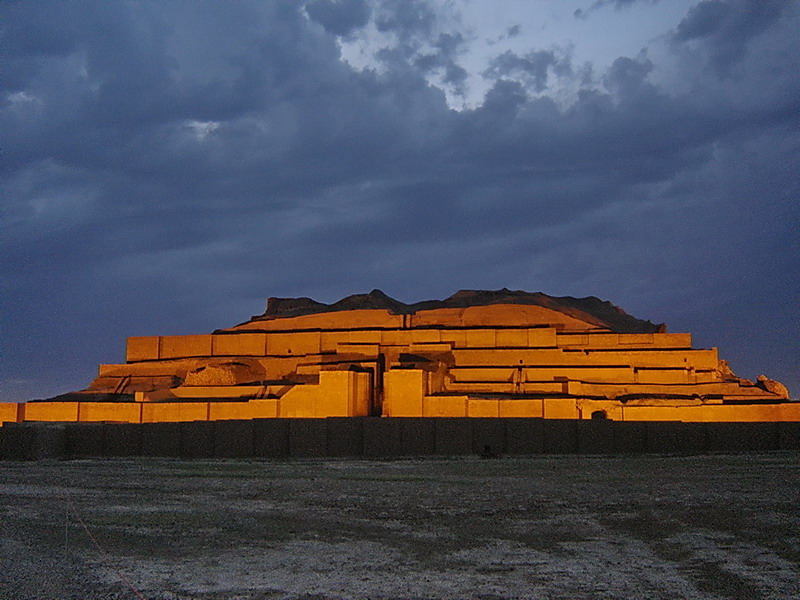
The Persian Garden
"The Persian Garden" comprises nine gardens from different epochs and climates. They exemplify the diversity of Persian garden designs that evolved and adapted to different climate conditions while retaining principles that have their roots in the times of Cyrus the Great, 6th century BC. Always divided into four sectors, with water playing an important role for both irrigation and ornamentation, the Persian garden was conceived to symbolize Eden and the four Zoroastrian elements of sky, earth, water and plants. These gardens, dating back to different periods since the 6th century BC, also feature buildings, pavilions and walls, as well as sophisticated irrigation systems. They have influenced the art of garden design as far as India and Spain.
The 9 designated gardens are:
- Royal Garden of Pasargadae
- Bagh-e Eram in Shiraz
- Bagh-e Chehel Sotun
- Bagh-e Fin
- Bagh-e Dolat Abad in Yazd
- Bagh-e Pahlavanpur
- Bagh-e Shahzadeh
- Bagh-e Abas Abad
- Bagh-e Akbariyeh
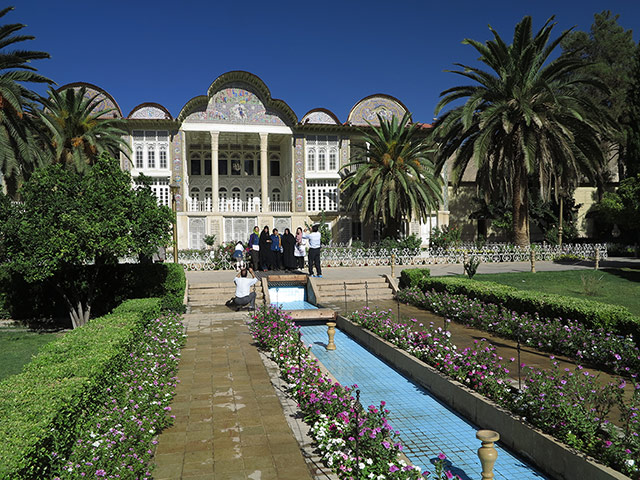
The Persian Qanat
Razavi Khorasan, South Khorasan, Yazd, Kerman, Markazi and Isfahan Provinces.
Most rivers in Iran are seasonal and have traditionally not been able to supply the needs of urban settlements. Major rivers like the Arvand, Aras, Zayandeh, Sefid and Atrak were few and far between in the vast lands of Persian antiquity.
With the growth of urban settlements during the ages, locally dug deep wells (up to 100 meters deep) could no longer keep up with the demand, leading to the systematic digging of a specialized network of canals known as Qanat.
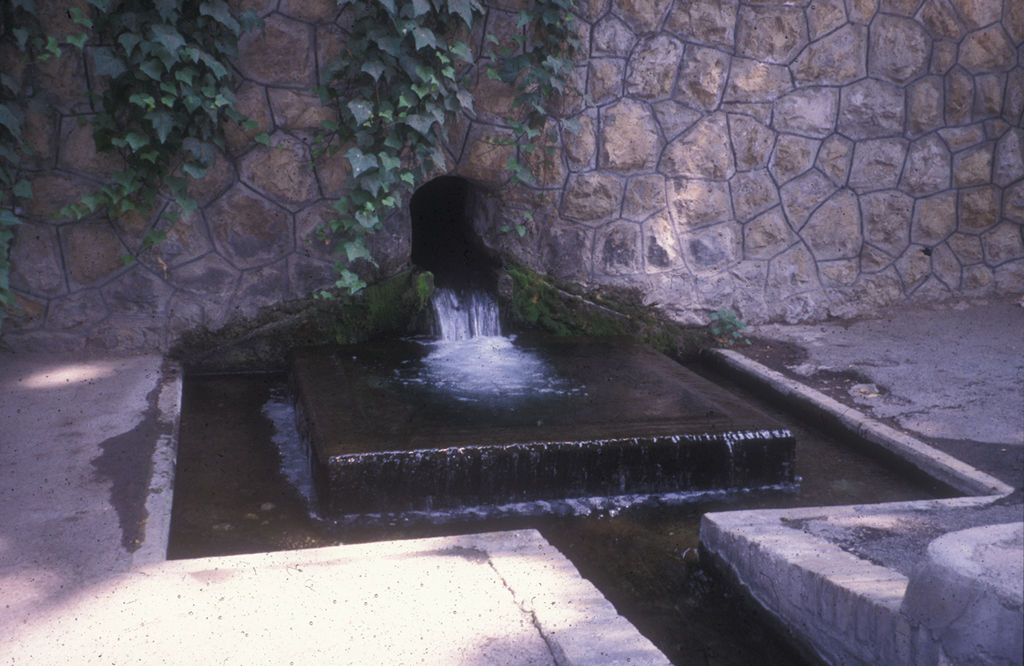
Lut Desert
Dasht-e Loot also spelled Dasht-i-Loot and known as the Loot Desert, is a large salt desert in Kerman and Sistan and Baluchistan Province, Iran and is the world's 25th largest desert. The surface of the sand there has been measured at temperatures as high as 70 °C (159 °F), and it is one of the world's driest and hottest places. It was inscribed to the UNESCO World Heritage Sites list on July 17, 2016.
.jpg)